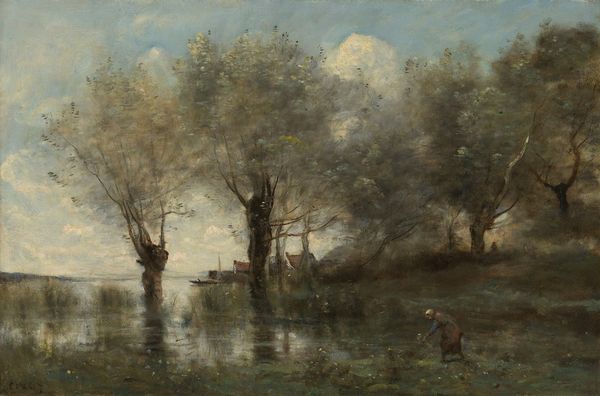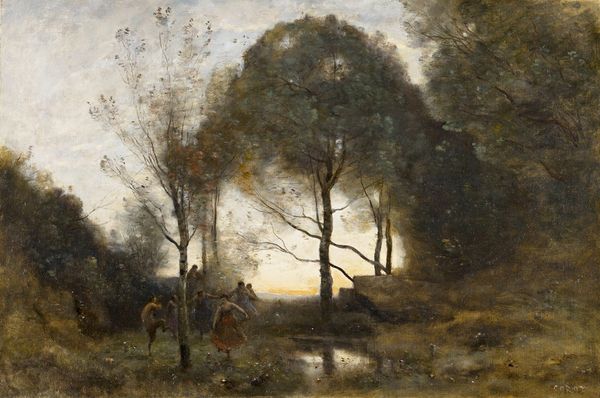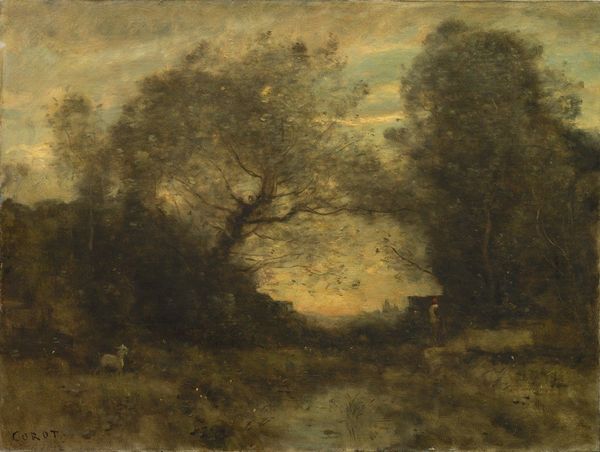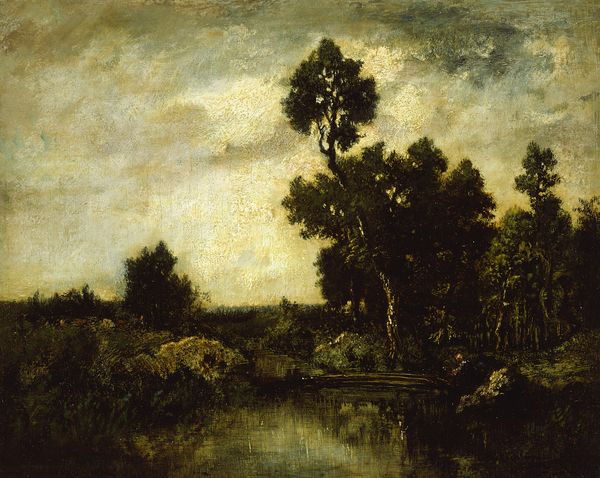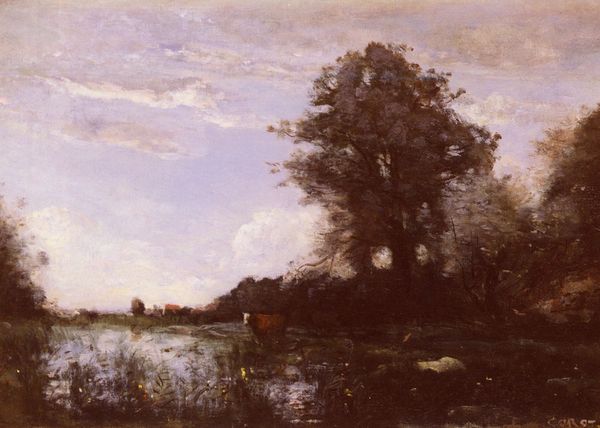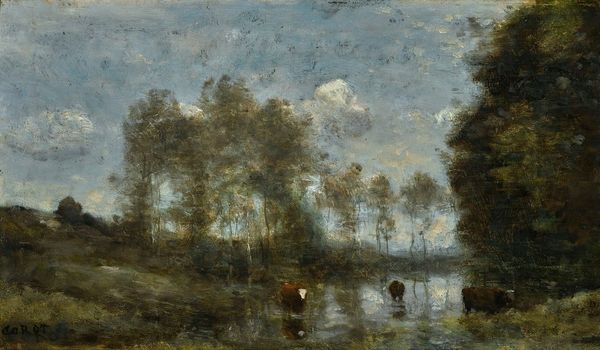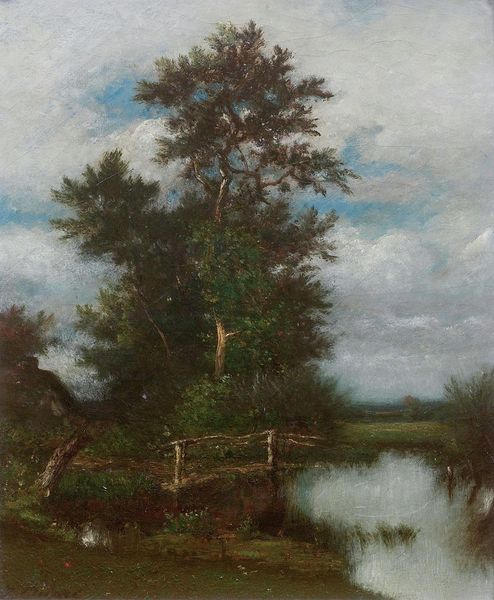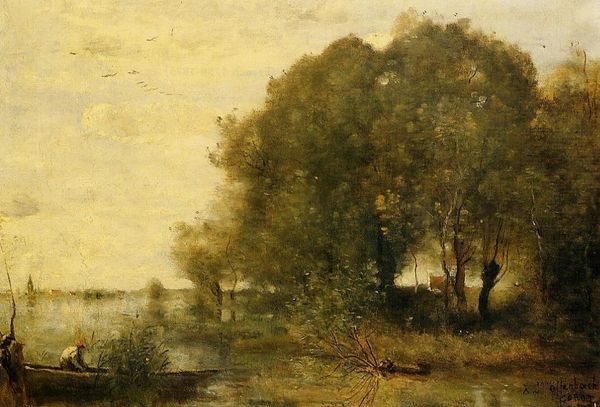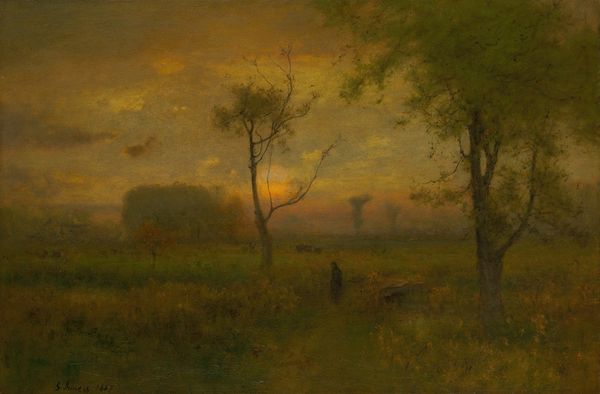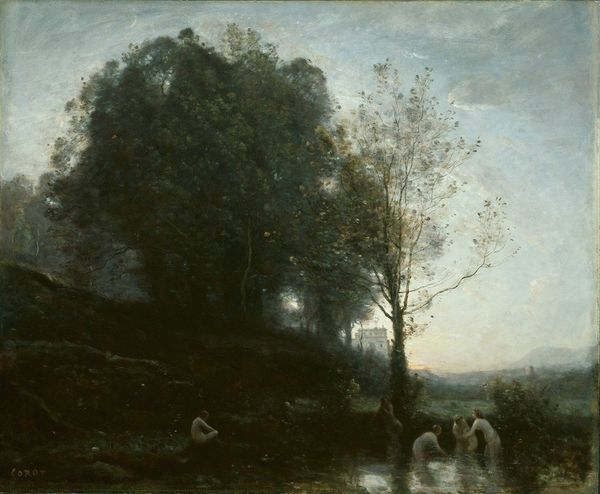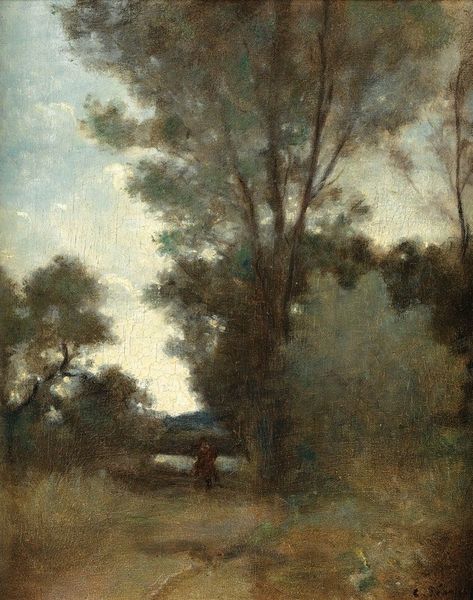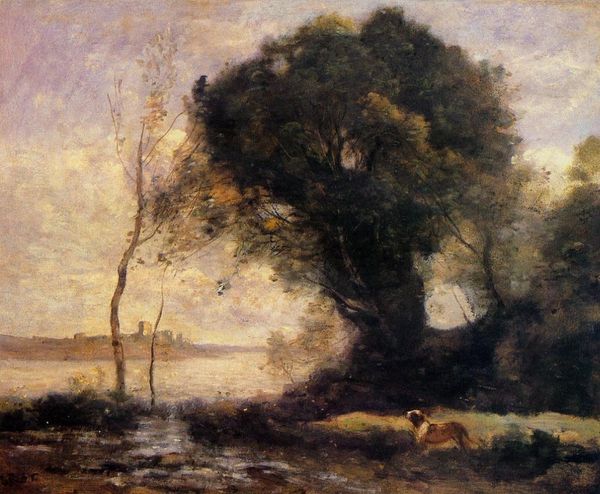
Copyright: Public Domain: Artvee
Curator: Let's turn our attention to George Inness’s "A Silver Morning," completed in 1886 using oil paint. What's your initial impression? Editor: A melancholic quietude. The overall tonal quality, the way the light barely cuts through...it feels intensely private and a little isolating. Curator: Indeed. Notice how Inness arranges the composition: the layering of tones, predominantly muted browns, greens, and greys, creates spatial depth. A silvery light permeates the canvas, though its source remains ambiguous, generating the 'silver morning' effect. The work offers a masterclass in restrained color theory and evocative brushwork. Editor: Restrained is a good word. Knowing the context of Impressionism and burgeoning modernism is key, especially concerning his contemporary engagement with plein-air practices, which marks his deliberate turn toward the everyday. I note the figure; barely there, absorbed by their surrounding within a bucolic context. Inness situates the individual humbly in the face of landscape. It reflects late 19th-century sentiments toward nature amidst industrial growth. Curator: A semiotic reading supports that: the figure, diminished and cloaked, could be interpreted as an index for humanity's small role in a larger world, yielding to natural order. That solitary figure and misty landscape also remind one of romanticism. Editor: Romanticism revisited, certainly, but charged with modernity’s anxieties about ecological changes and human disconnection. Even Inness’s application of paint can be understood socially, his impasto reflecting a search for textural honesty and an aesthetic alternative to industrial uniformity. Curator: Interesting point about his materials reflecting his ethos. And certainly, Inness transcends simple aestheticism by engaging viewers emotionally and intellectually, prompting meditations on time, existence, and environmental impact. Editor: Yes, the subdued palette doesn't just create atmosphere but sets an emotional tone. He isn’t merely capturing visual data; he’s conjuring feeling, imbuing the mundane with a palpable sense of longing. It is quiet observation, indeed! Curator: A complex negotiation of painterly traditions filtered through a uniquely personal lens, reflecting, too, the transitional moment in art history as painting embraced abstraction. Editor: It invites consideration about not only painting conventions but broader anxieties about place.
Comments
No comments
Be the first to comment and join the conversation on the ultimate creative platform.
